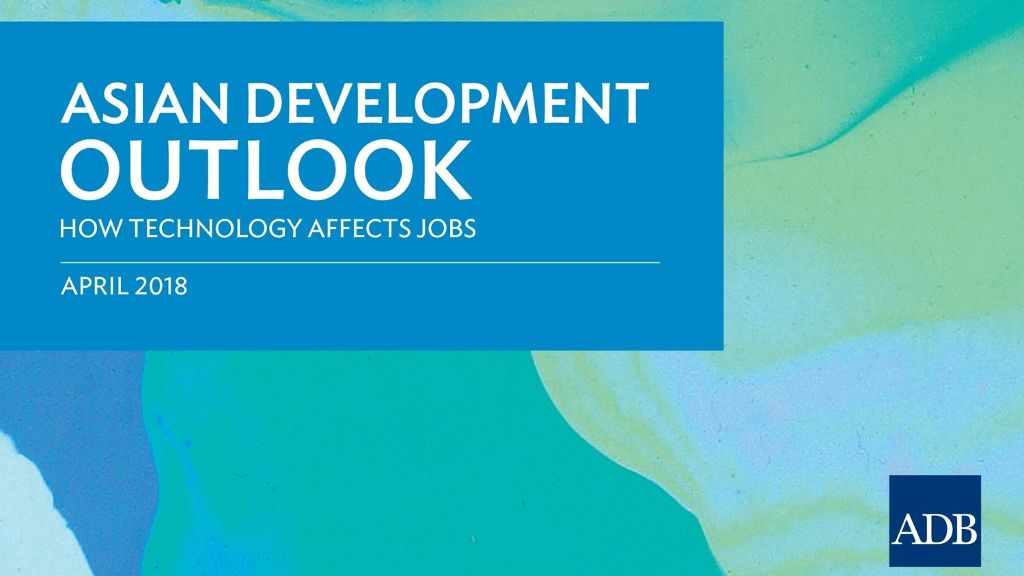Asian Development Outlook 2018: How Technology Affects Jobs, which was released by the Asian Development Bank (ADB) this month, notes that Tajikistan’s economic growth rose to 7.1% in 2017 as the external environment strengthened and public investment continued. Inflation reportedly accelerated to 6.7%.
Growth is reportedly projected to slow to 6.0% in 2018 with tighter fiscal policy and continued weakness in banking, recovering to 6.5% in 2019. Higher infrastructure spending will likely return the current account to a deficit. Tajikistan needs to expand productive employment, according to the report.
The report says growth is expected to recover to 6.5% in 2019 on gains in manufacturing and mining, higher remittances, and the expanded replacement of imports with local alternatives.
On the supply side, industry is forecast to expand in 2018 and 2019 as construction on the Roghun hydropower project continues and mining posts gains. In addition, the opening of the Tajik segment of a gas pipeline from Turkmenistan to the People’s Republic of China should expand manufacturing. Agriculture is expected to rise modestly, barring an unusually dry winter. Higher remittances should boost services moderately.
On the demand side, consumption should expand, reflecting higher remittances and expected hikes in public sector wages. However, fiscal consolidation and weak credit expansion will limit growth in investment. Net exports are forecast to rise as exports expand and domestic production increasingly replaces imports.
Inflation is projected to accelerate to 7.5% in 2018 as liquidity is spurred by further sizable bank recapitalization, public salary and electricity tariff hikes, and modest somoni depreciation. Despite higher remittances in 2019, inflation will likely moderate to 7.0%. Over the next 2 years, fiscal policy is expected to remain tight, with the budget deficit projected to remain at 2.5% of GDP in 2018 and 2019, consistent with the approved fiscal strategy for 2017–2020. Slower growth and constrained imports are projected to limit revenues to 30.2% of GDP in 2018 and 30.9% in 2019. Expenditure is forecast to equal to 32.7% of GDP in 2018 and 33.4% in 2019, with accelerated debt repayment and demands for public spending forecast to raise outlays. Expenditure could be higher with additional recapitalization of troubled banks, a cleaning of arrears at state-owned enterprises, or faster currency depreciation. Any of these developments would add to public debt, as would further eurobond placements to finance large infrastructure projects.
Monetary policy is expected to focus in 2018 and 2019 on lowering inflation while avoiding an economic slowdown.
Higher electricity and mining output is expected to contribute to projected export growth of 15.0% in 2018 and 20.0% in 2019 as the launch of the first and the second Roghun generators expand industry. Even with efforts at import substitution, imports are expected to grow by 5.0% in 2018 and 10.0% in 2019, powered by further gains in remittances and higher capital spending. With imports recovering and construction of the Roghun project accelerating, little increase in gross international reserves is expected.
Despite average growth of 7.2% from 1997 through 2016, Tajikistan is not creating enough jobs. Annually from 1991 to 2016, the working-age population increased by 3.0% but employment rose by only 0.7%. Economic growth has come largely from improved labor productivity and higher domestic consumption financed by remittances from Tajik migrant workers. Meanwhile, large-scale labor migration not only boosted household income and purchasing power but also took the spotlight off domestic job creation.
Remittances are currently forecast to rise, the report says, noting that if migrants begin returning again at the rate observed in 2016, however, additional jobs will be needed to meet the poverty objective.
Tajikistan’s National Development Strategy to 2030 lists productive employment as a key objective, and steps have been taken to expand jobs. The Decent Work Country Program, 2015–2017 reportedly created 100,000 jobs annually, but mainly seasonal work in agriculture.
Reform to the technical and vocational education and training system is currently upgrading facilities, providing new competency-based curricula and learning materials, developing an in-service teacher training plan, and strengthening sector management.
To encourage self-employment, 2018 has been declared a year of tourism development and folk crafts. The percentage of Tajikistan’s population of working age is projected to continue rising to 2030. Benefiting from this demographic dividend requires structural reforms to boost growth and create more high-quality jobs, according to the report. This includes additional measures to improve the business climate, such as further reducing and consolidating the number of official bodies with inspection powers, creating a healthier banking sector to facilitate lending, and streamlining procedures for issuing construction permits, paying taxes, and enforcing contracts.







